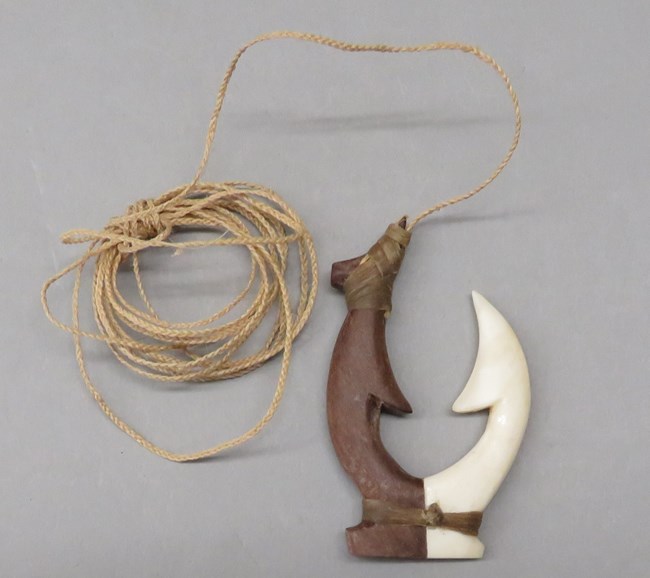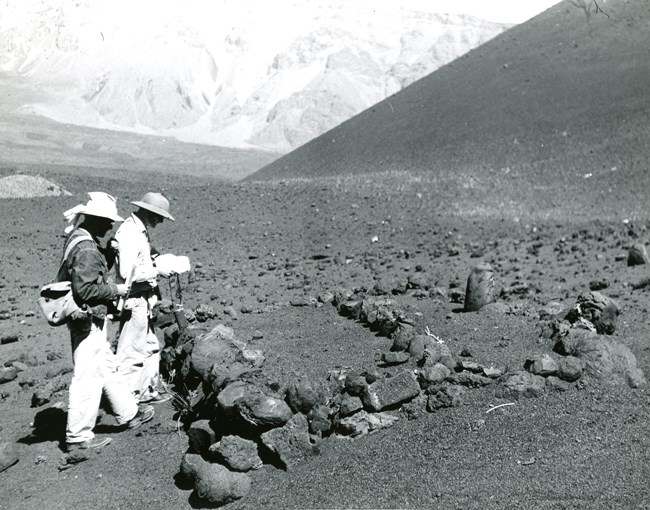
Haleakalā Archives INTRODUCTIONHaleakalā is a sacred place that has been used since ancient times. It is the dwelling place of nā akua (the gods), where kahuna (priests) conduct ceremonies. In the past, Native Hawaiians built special sites in the wilderness of Haleakalā to study and revere the stars. Physical remains of stone shelters, trails, and cave sites show the extensive quarrying of basalt rock for stone toolmaking. EMORY AND SOEHREN; TWO ANTHROPOLOGISTS, MANY EXPLORATIONS.Anthropologists Kenneth P. Emory and Lloyd J. Soehren have contributed to the development of archeology in Hawai‘i and at Haleakalā National Park. Emory was the first anthropologist to survey Haleakalā in 1920.The next major expedition was led by Soehren in 1962. Both men were sponsored by the Bernice Pauahi Bishop Museum, the largest museum in Hawai‘i. Soehren and Emory made one visit together to the park to survey archeological sites (pictured). 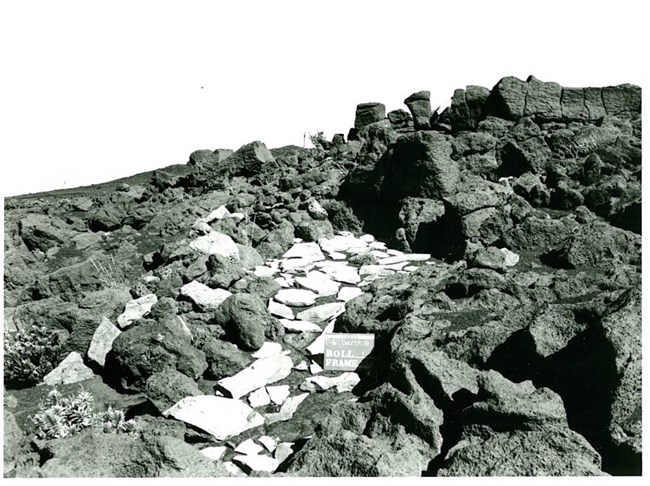
Image courtesy of the Bishop Museum THOMAS MAUNUPAU: HAWAIIAN EXPLORERThomas Kananiokeaupunimalamalama Maunupau was an influential Hawaiian scholar of the early 1900’s and was an advocate of his Hawaiian culture. Maunupau accompanied Emory into the Haleakalā wilderness in 1922 and the two men developed a lifelong friendship. Maunupau saw this expedition as a way “to look at Hawaiian culture and uplift it with importance and dignity” (Maunupau, 1998 vii). HALEAKALĀ UNINHABITEDNative Hawaiians consider the summit of Haleakalā a sacred place and never established permanent settlements in the Wao Akua (realm of the gods).Some of the sites located at Haleakalā were once used as temporary sleeping shelters for Native Hawaiians traveling to Haleakalā for specific purposes and show no evidence of permanent occupation. These pā, or enclosures were a necessary protection against the fog, rain, and cold wind that frequently occurs in the higher altitudes of Haleakalā. 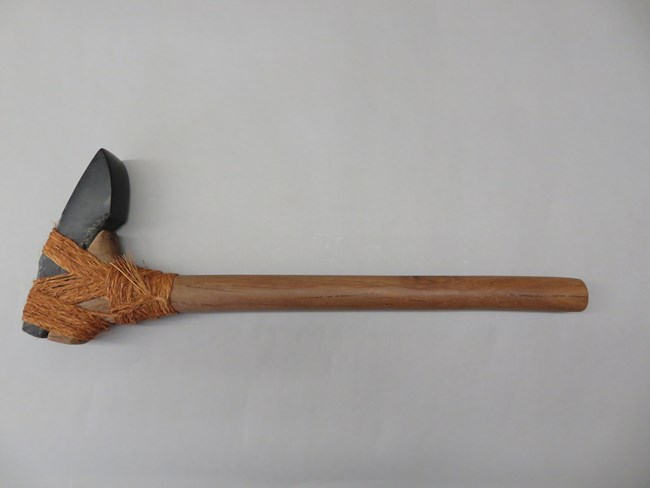
Date created: 2017 Artist: Kenneth Hiraoka HALE 198 NPS Photo KO‘I: SIMPLE MATERIAL, LABORIOUS PROCESSKo‘i or adze (stone ax-like tool), were used to harvest trees, carve canoes and ki‘i (statues). The process for making ko‘i is labor intensive. Following the traditional method, the kāko‘i (adze maker) obtains a piece of dense basalt stone. The kāko‘i then chips away at the stone with a haku kā ko‘i (chipping stone) giving it a triangular shape.Once shaped the ko‘i is applied to a hoana (grind-stone), which is sprinkled with sand and water. The ko‘i is then lashed to a wooden handle. Local artist and master carver Kenneth Hiraoka has created a ko‘i (exhibited) inspired by those found in Haleakalā National Park. 
HALE 428 NPS PHOTO QUARRYING BASALT TO MAKE KO‘I.The fine-grained basalt from the Haleakalā adze quarry was a major source of material for kāko‘i (adze makers). Kāko‘i would gather basalt from the summit of Haleakalā and chip away the stone forming a rough, unfinished ko‘i, leaving behind hundreds of pieces of stone flakes.The stone flakes exhibited were collected in the Haleakalā wilderness by Soehren (pictured) in 1962. Caves near the Haleakalā adze quarry were commonly used as shelters for kāko‘i shaping adze. The unfinished ko‘i would then be transported down the mountain to workshops in the villages to be ground and polished into finished ko‘i. 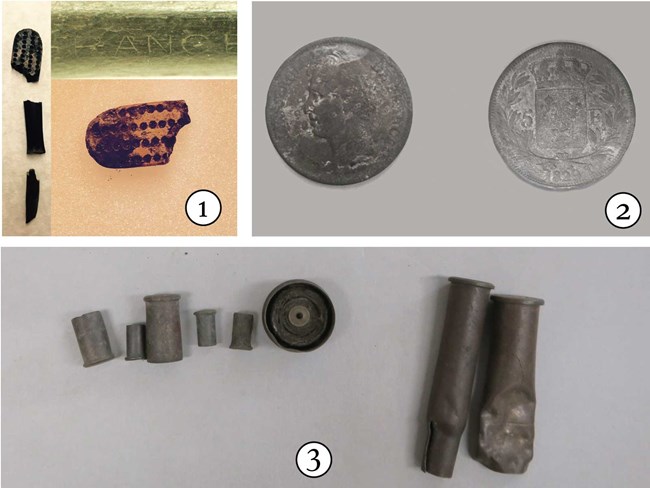
2. 5 Franc (HALE 416) 3. Bullet casings (HALE 6069) NPS Photo WHAT ARCHEOLOGICAL SITES ARE IN THE HALEAKALĀ WILDERNESS?Emory published his findings in 1921 with illustrations and photos from his 1920 expedition of the Haleakalā wilderness. Most of Emory’s discoveries were of stone mounds, terraces, and platforms dating to the pre-Western Contact Native Hawaiian period. Emory interpreted these as heiau (temple sites), sleeping shelters, and ahu (shrines or markers).
The objects photographed are from Soehren’s 1962 survey in Haleakalā National Park. Soehren collected artifacts that date to the periods before and after Western Contact with Hawai‘i. The historical (post-Contact) artifacts may have been left behind by early explorers, ranchers, or visitors to Haleakalā.
|
Last updated: July 28, 2023

